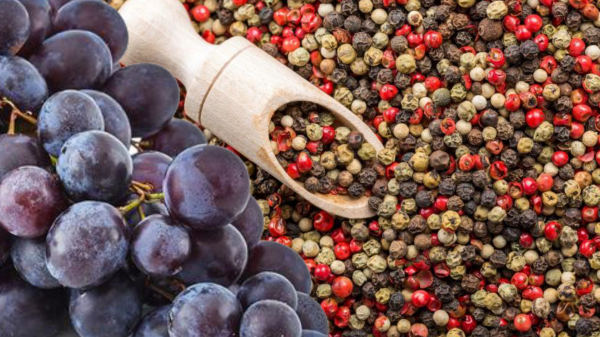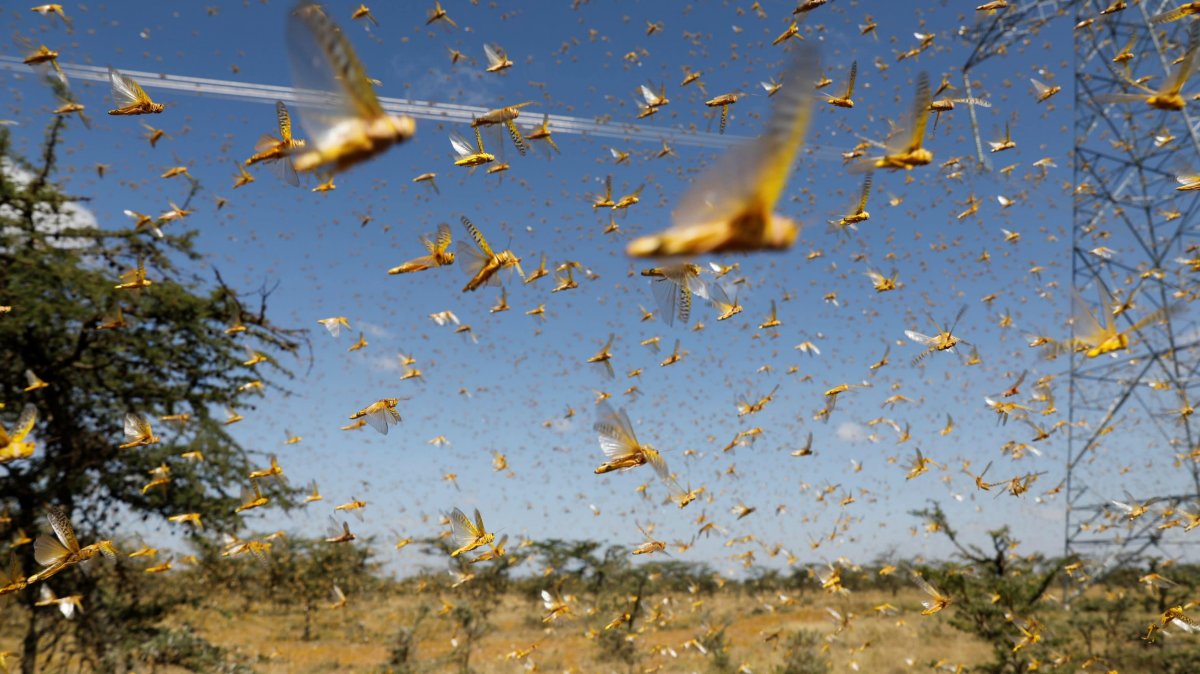
At a time the country is still battling COVID-19, another threat has emerged: and not in the form of a virus or disease but in the form of an insect that could seriously affect the food security of the country.
Recent news of yellow-spotted grasshoppers in Mawathagama in the Kurunegala district has generated fear among many. The reports came alongside recent reports of locust invasion in the African continent and India and Pakistan.
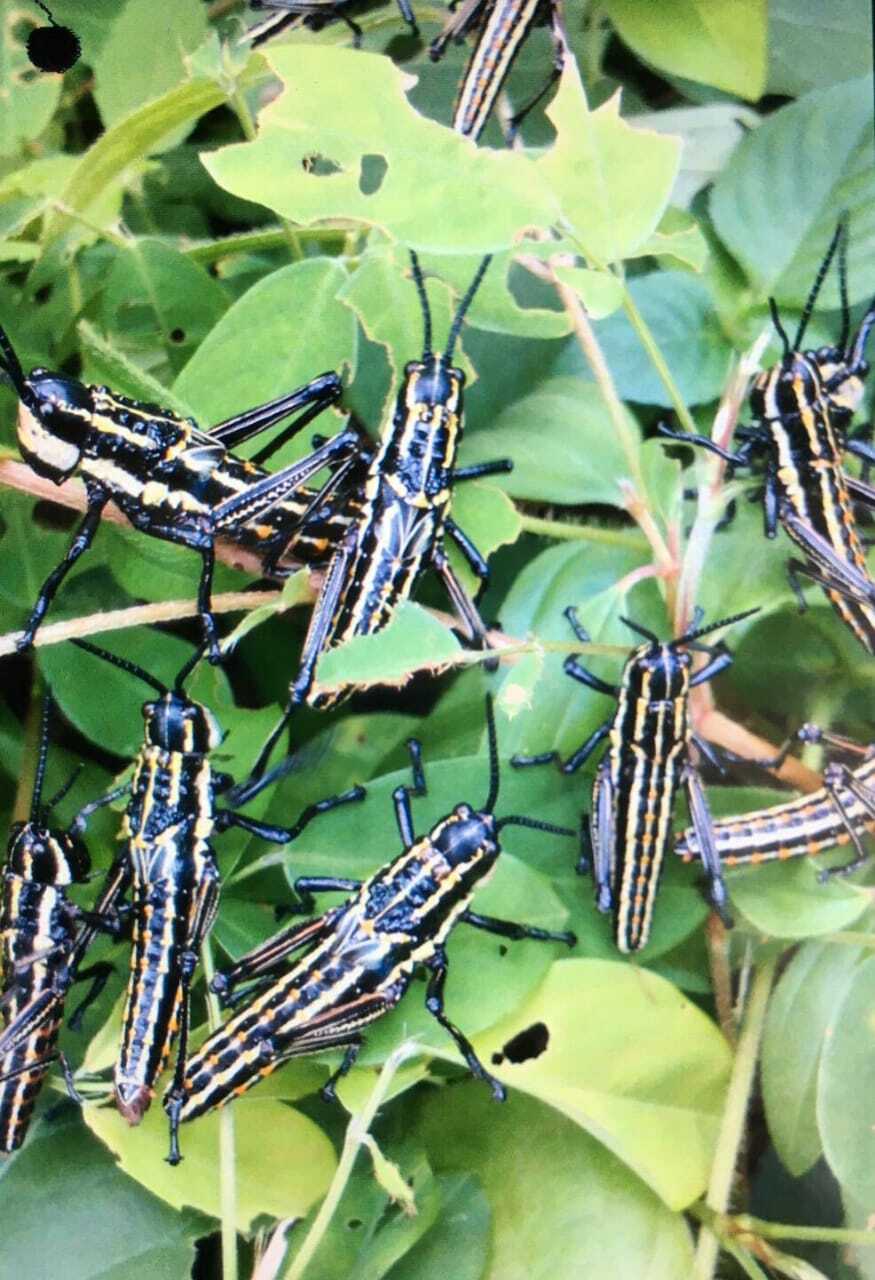
Not The Same Locust
Locust plagues are not a new phenomenon in farming communities around the world, especially in the African continent. They devour crops and cause severe damage to agricultural lands, with disastrous consequences, leading even to famine and starvation.
Earlier this year, massive swarms of Desert Locusts wreaked havoc in East Africa, wiping out crips vital to the survival of local people. As months passed by the swarms migrated to Afghanistan, Pakistan and eventually, India.
However, the yellow-spotted grasshopper is not the same as the infamous desert locust (Schistocerca gregaria). This species has been identified as Aularches miliaris, belonging to the family Pyrgomorphidae and is a type of locust. They are usually found in South and South-East Asia and are known to reach high densities periodically. A spike in these grasshopper populations has been observed in several districts such as Kegalle, Kurunegala, Matara, Kilinochchi and Jaffna since early June. But the species rarely form swarms as locusts do.
While the yellow-spotted grasshoppers may not be able to cause the same level of destruction as the desert locust, it is extremely important to prevent its spread and keep the species density under control before it becomes a menace for the farming community in the country.
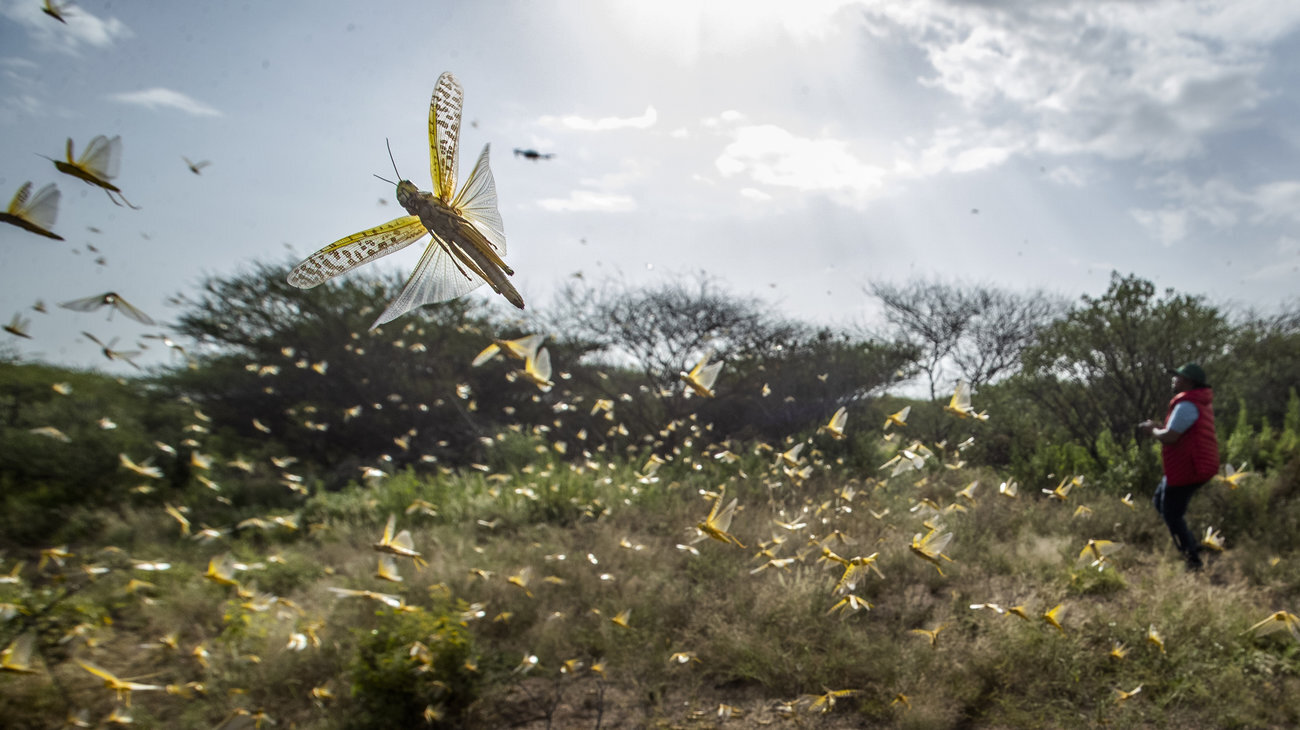
These yellow-spotted grasshoppers are considered minor pests, attacking crops like banana, coconut, areca nut, coffee and mango. The species, however, plays a significant role in improving nutrients in the soil that stimulates plant growth.
Actions Taken So Far
Ever since the species was identified, the Department of Agriculture (DoA) has been actively engaged in control operations. A team of experts is working at the sites to observe the behavioural patterns of the grasshopper in order to control them before the nymphs (immature stage of a grasshopper) convert into flying adults.
In addition, the DoA has asked the public to report any incidents of grasshopper sightings through the regional Agriculture Instructor (AI) of the area or by dialling 1920 from any mobile network.
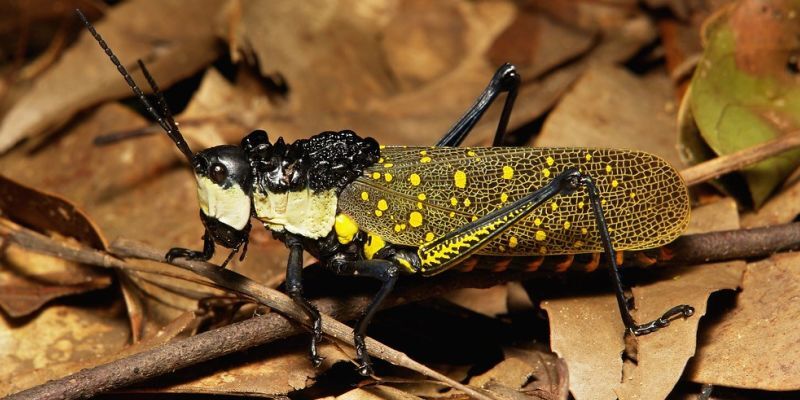
While the pesticide treatment recommended by the DoA has shown positive results, and farmers are doing their part by ploughing lands and burning affected vegetation to destroy the eggs and the nymphs stages of the pest, other measures that consider an integrated approach to the problem must also be considered.
According to Professor Buddhi Marambe, Senior Professor, Faculty of Agriculture at the University of Peradeniya, natural enemies can play a key role in population control. Natural predators of the grasshoppers include beetles and crickets (egg predators) and birds, especially the common mynas and babblers, which actively seek and hunt nymphs and adult predators.
“Once the population is under control, the natural predators can take over to keep them at bay, returning balance to the natural equilibrium again,” Professor Marambe said.
The Way Forward
This grasshopper invasion is a reminder that we cannot afford to fight a battle against these creatures at a time where the country is focused on rebuilding; particularly when our economy is re-focussed towards production after COVID19.
It is a clarion call for proactive action, considering also the state of neighbouring countries that are dealing with the results of locust invasion.
While the DoA frequently monitors the migratory movements of the Desert Locust and is in close consultation with India to prevent them from entering the country, the use of precision-agriculture technology could be a cost-effective mechanism to combat the looming threat.
The Food and Agriculture Organization of the United Nations (FAO) has suggested drone technology as the recommended feature solution to establish a locust early warning and prevention control system.
Ground and aerial control can be successfully utilised to reduce the locust population through remote-sensing technology. Such surveillance systems can monitor breeding spots to take actions that would control the regeneration of population, and there are already local agri-tech companies that are working towards building end-to-end, tailor-made agri-tech solutions able to tackle the current situation.
Overall, the importance of a holistic approach to controlling the issue must be emphasised. It is vital that we be well-prepared, and even have a plan with the worst-case scenario in mind in an event of a possible locus attack in the near future.
Nilushana Sooriyarachchi is a consultant in agribusiness, value chains and market development and is currently an advisor to the Smallholder Agribusiness Partnerships Programme (SAPP) under the Ministry of Agriculture.


.jpg?w=600)



